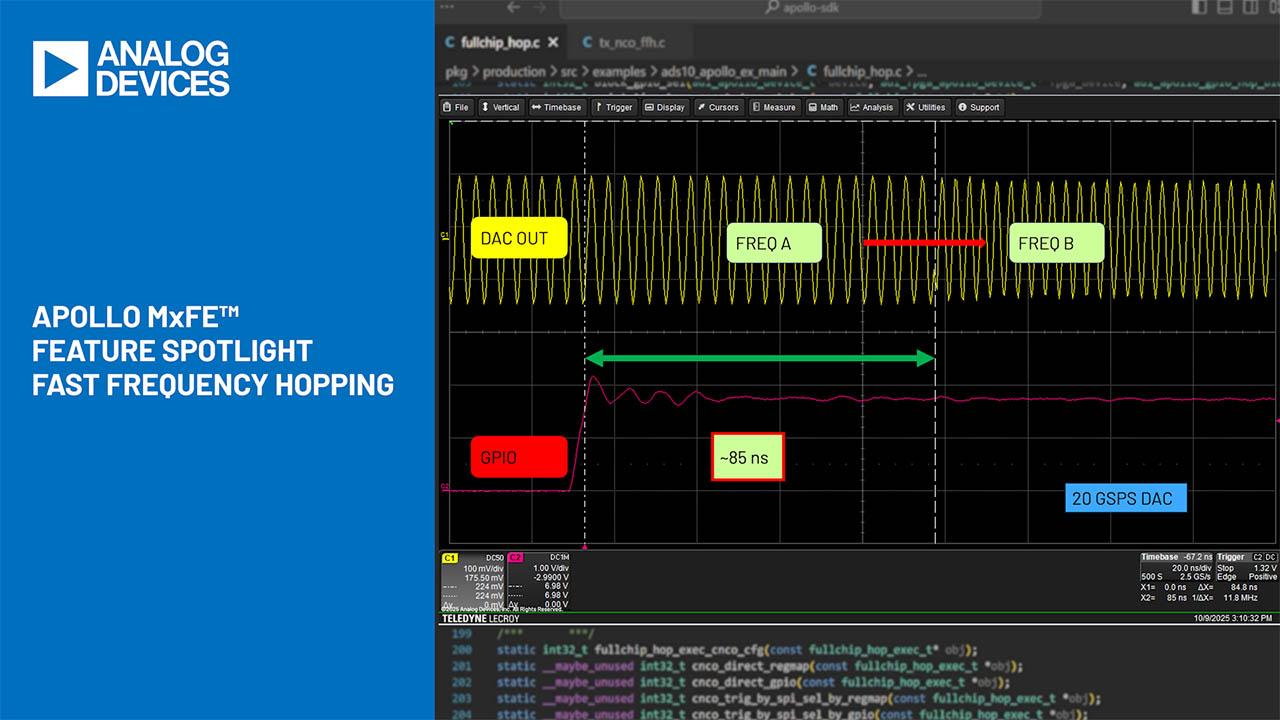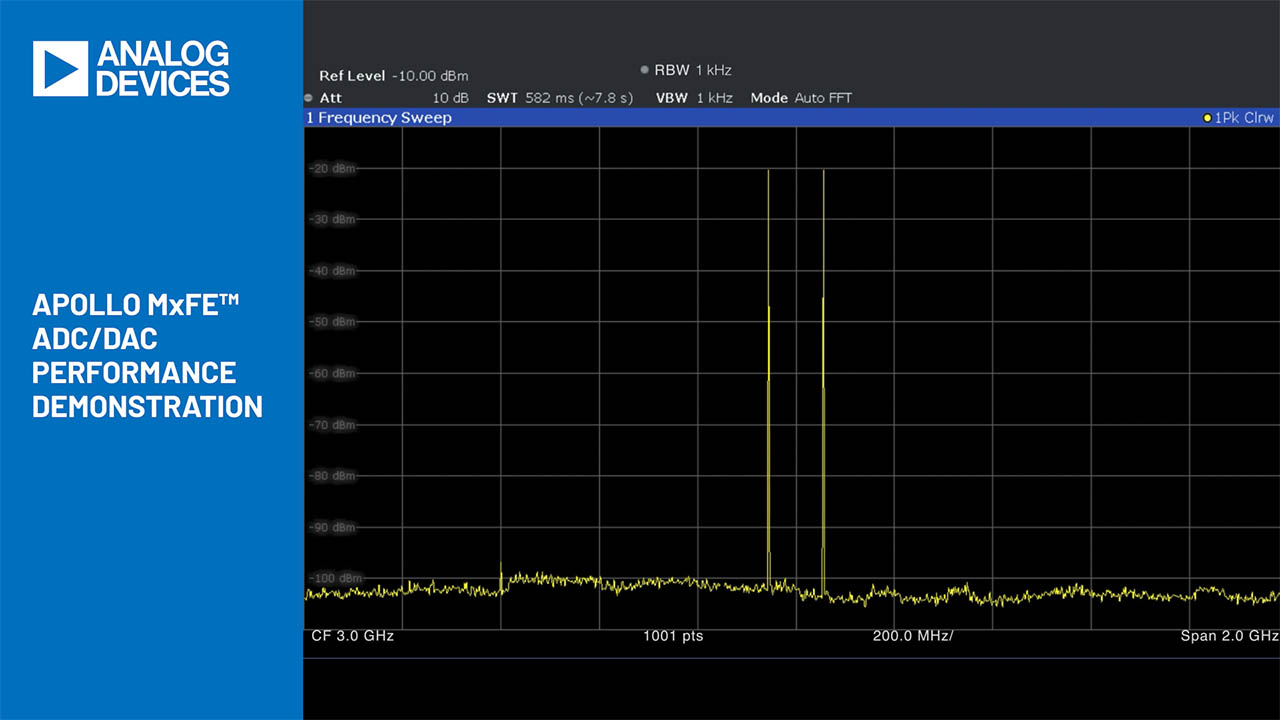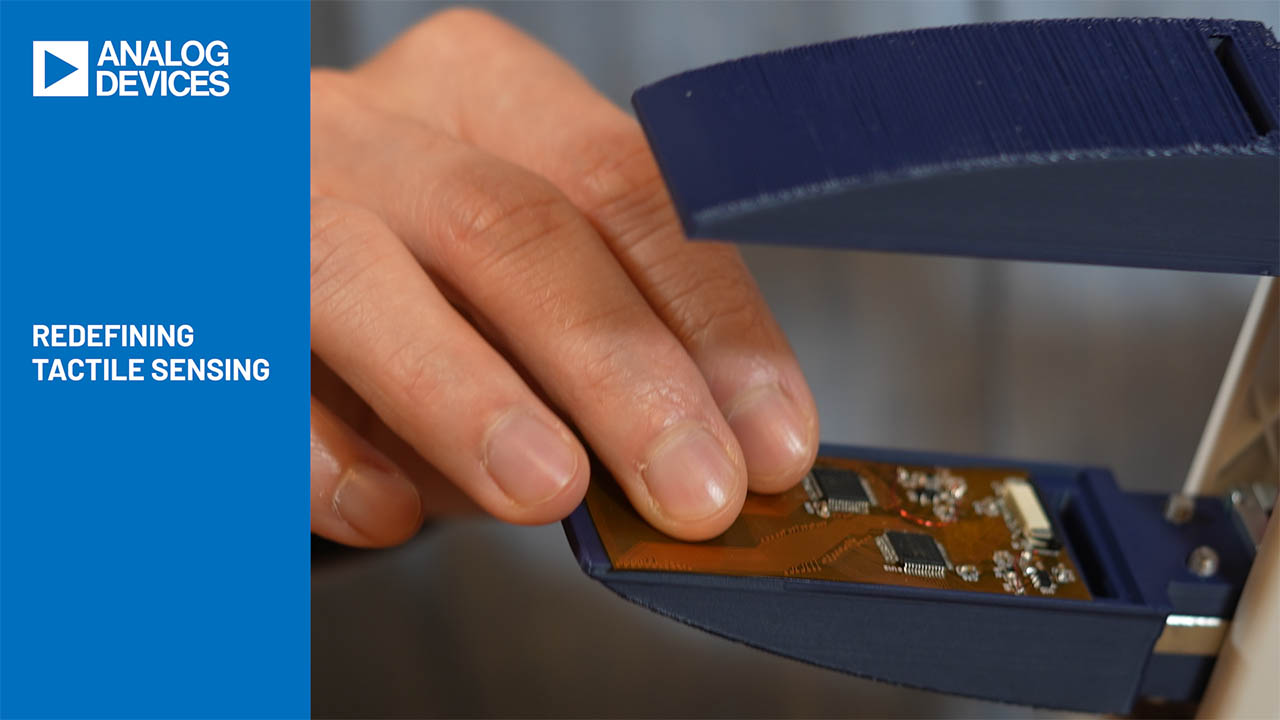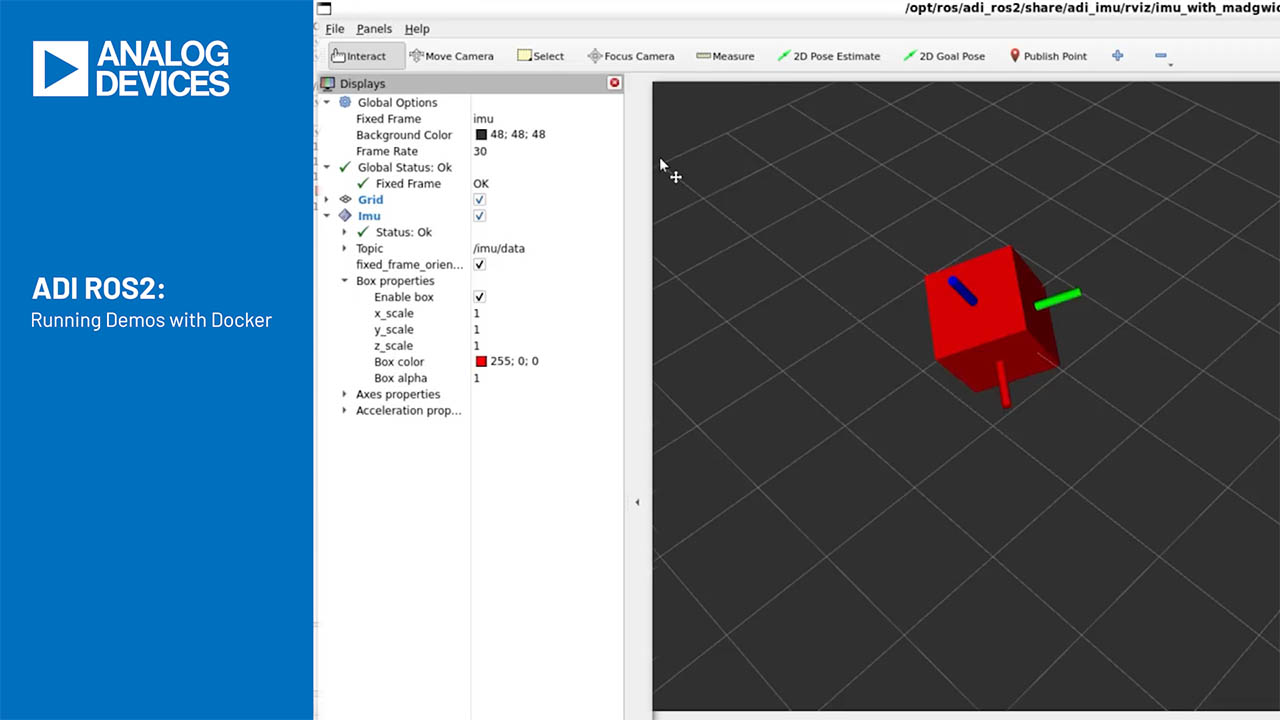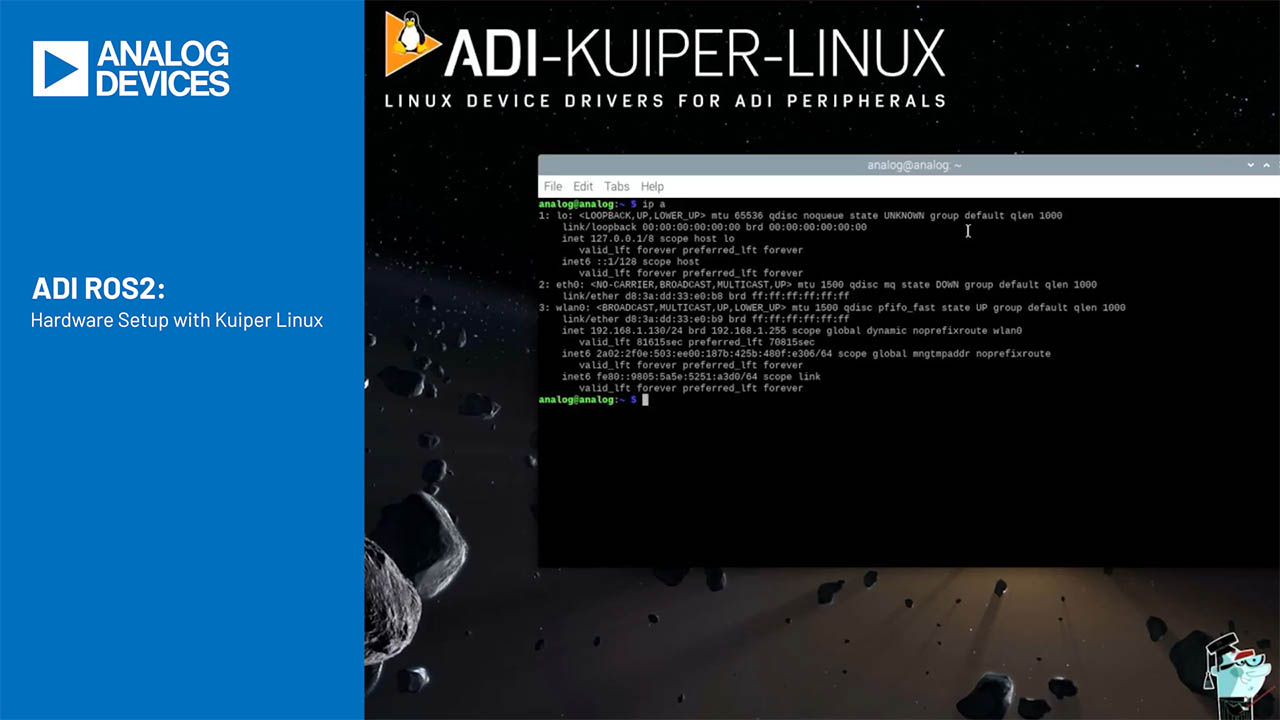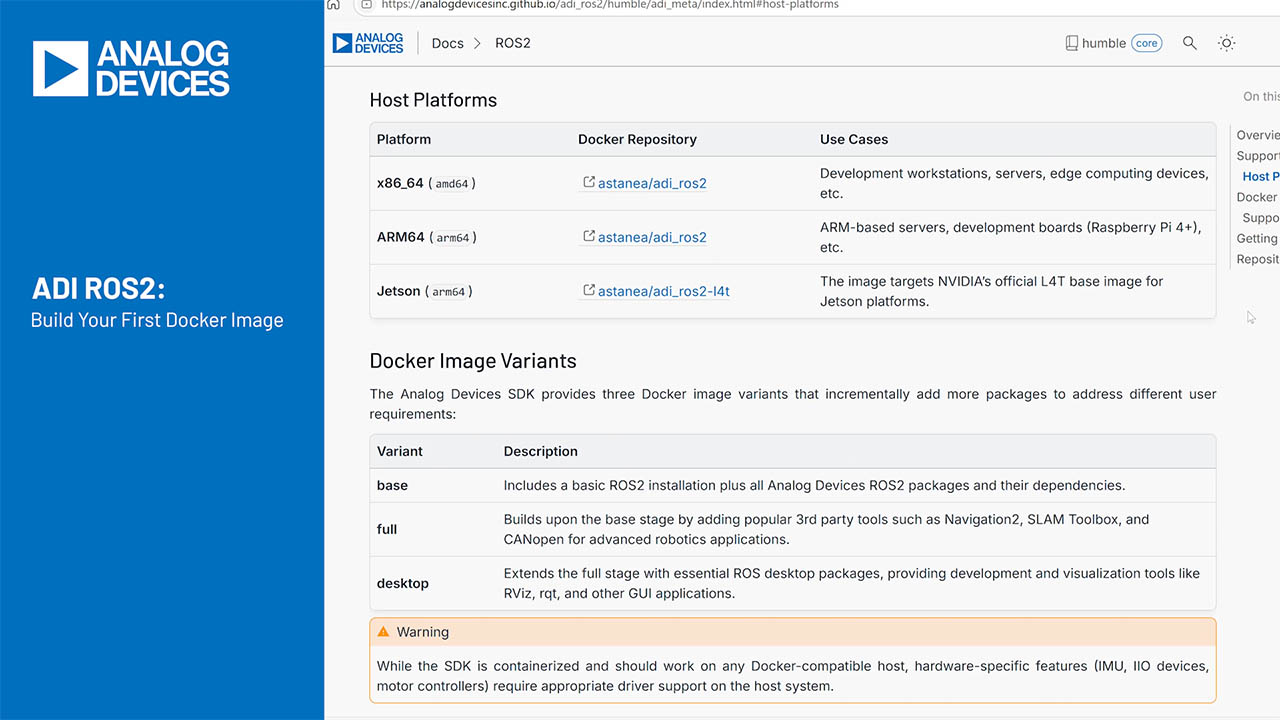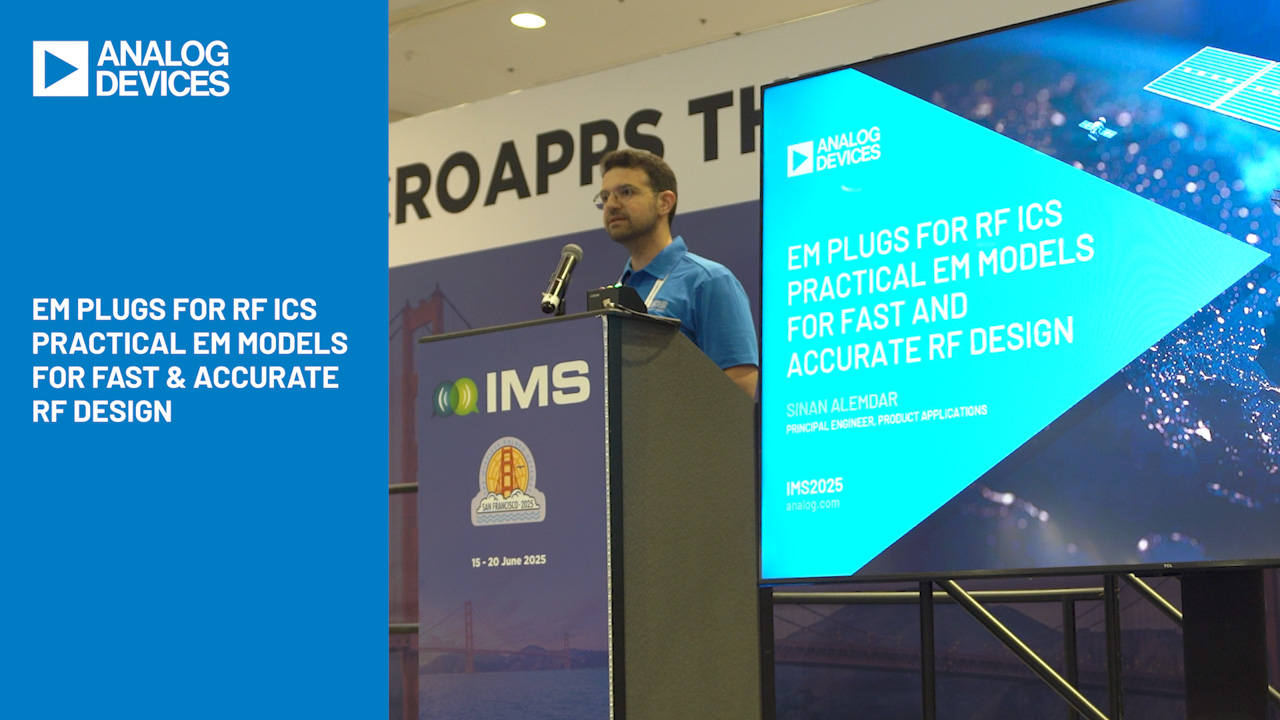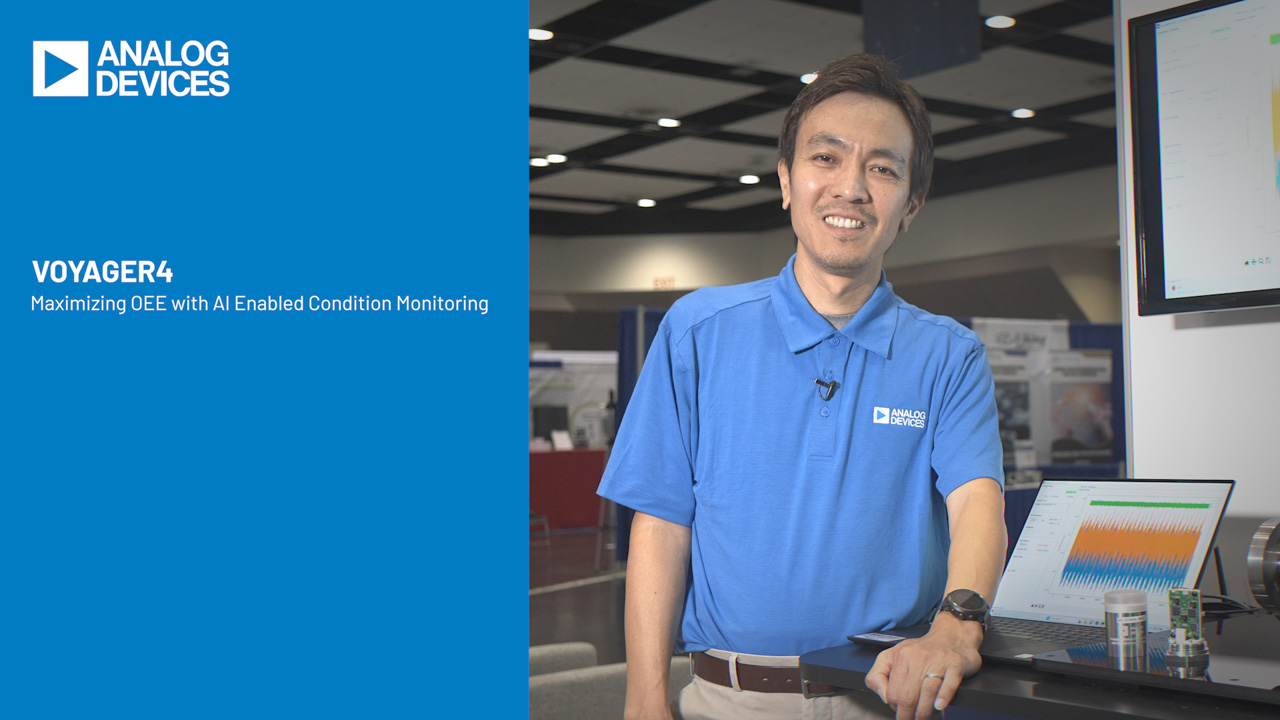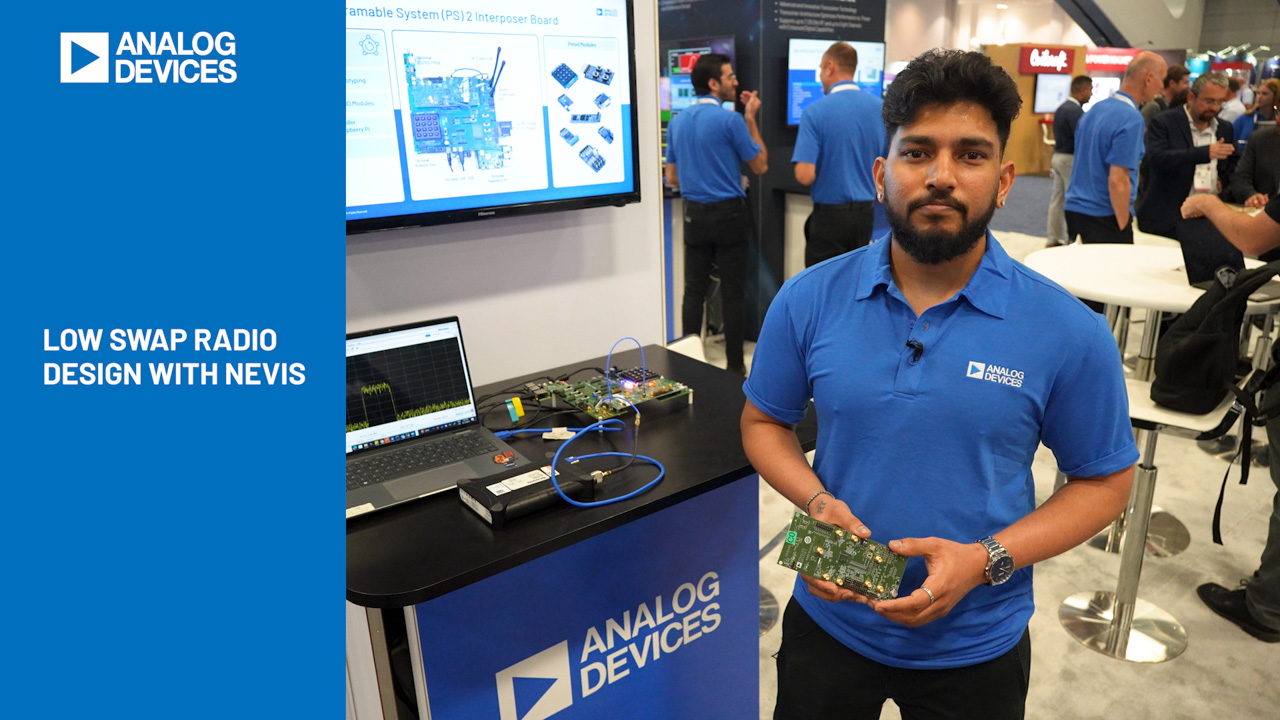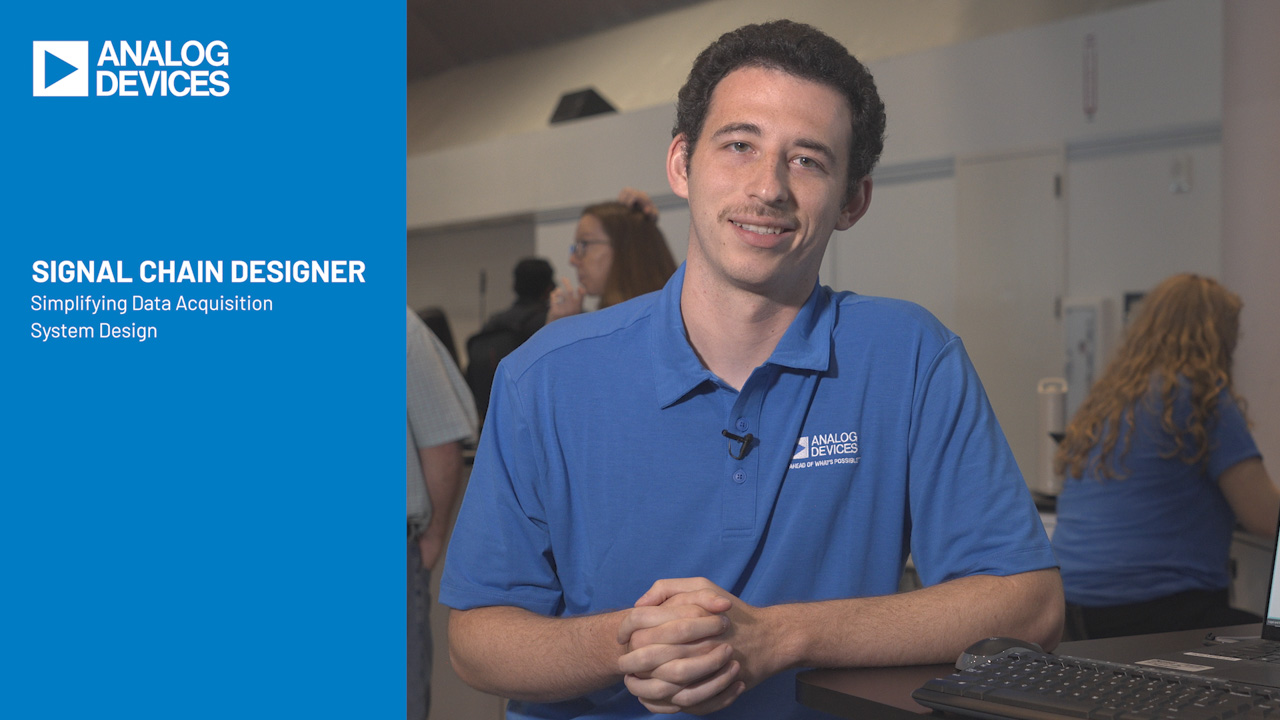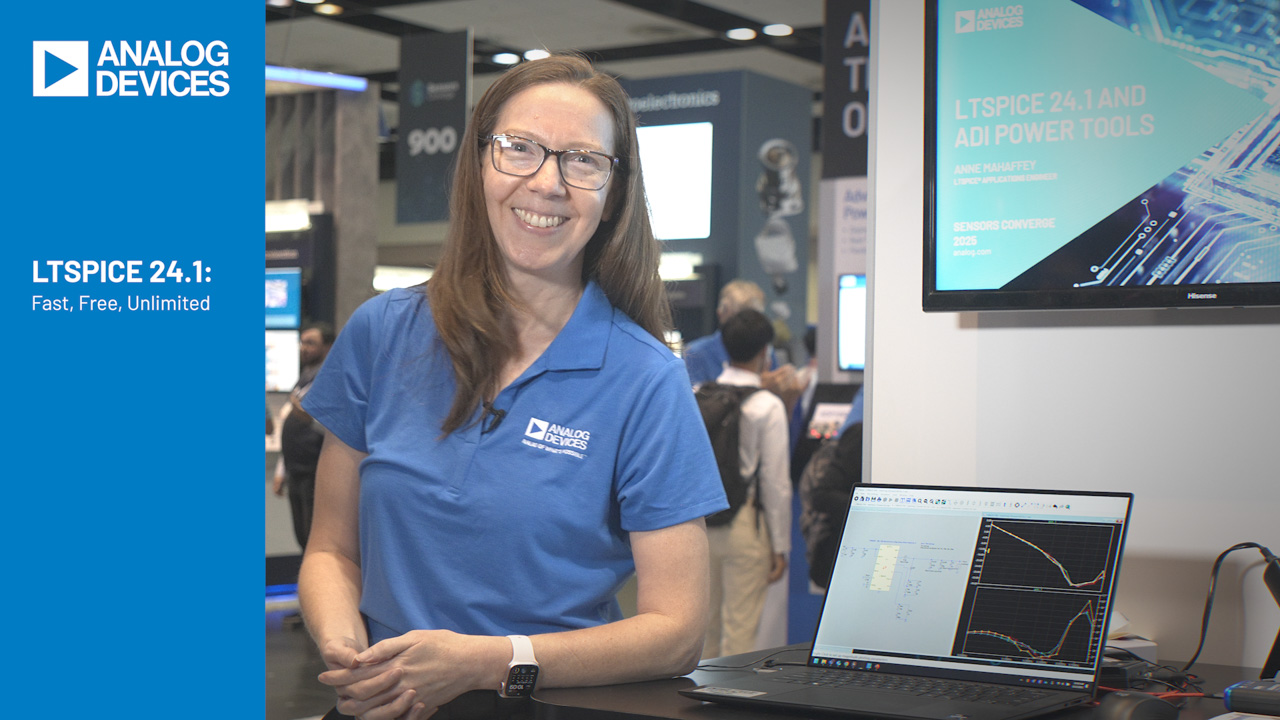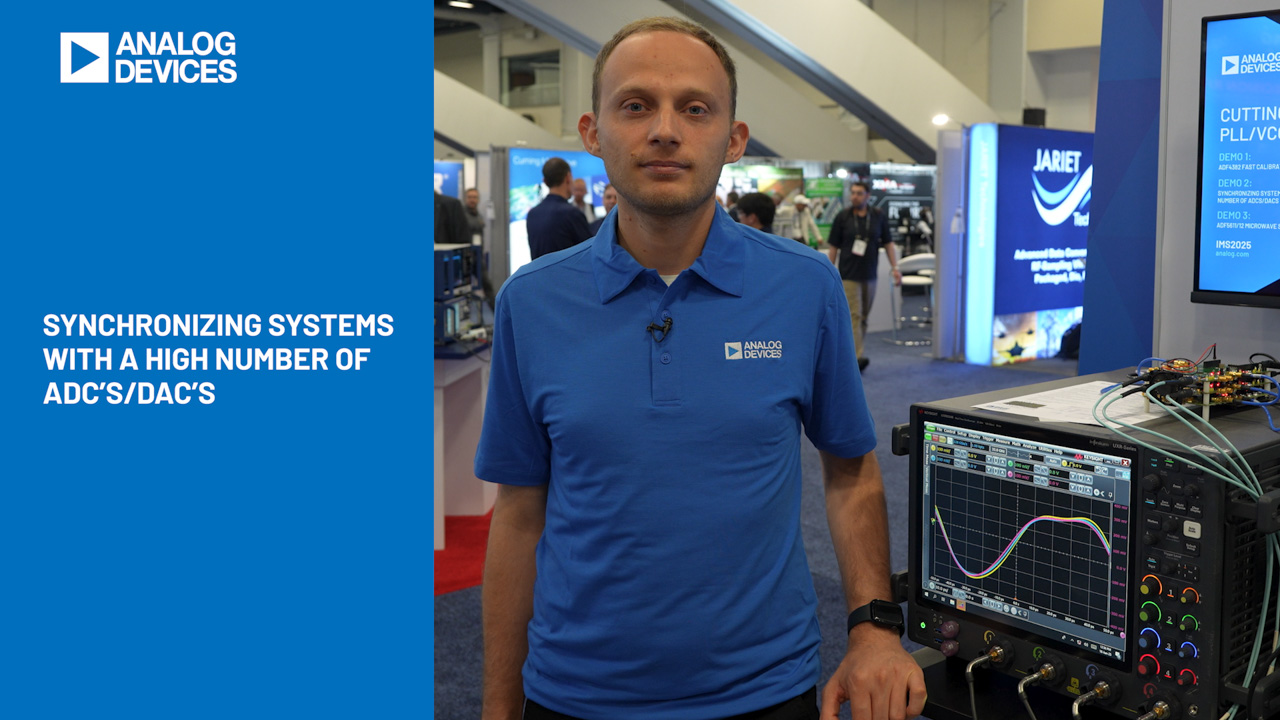Read other articles in this series.
Abstract
The only way to determine the characteristics of an antenna is to measure its performance since theory alone cannot predict the actual results. The fields generated by antennas are extremely complex because they interact with everything in the environment. Given this complexity, antenna measurement and analysis will be more successful if you use an experienced and accredited antenna laboratory equipped to handle the tests, standards, and their nuances.
This article is the second of a two-part analysis of antenna theory and design for a remote-keyless-entry (RKE) application. The first part of this article, Small Loop Antennas: Part 1—Simulations and Applied Theory, explains the complexity of antenna analysis, presents several simulation tests, discusses test results, and compares the benefits and limitations of short-loop or open-loop antenna designs. This article, Part II of our discussion, focuses on the actual antenna field tests which incorporated some of the techniques and test parameters required by the FCC for certification of a device. Using the Analog antenna board presented in Part I, an outdoor 'real-world' field test was performed. The theoretical results presented in Part 1 are compared with actual field-test data.
This article does not describe how to perform actual FCC testing; that is far beyond the scope of the discussion. Our goal, rather, is to help the reader understand what design and environmental issues to expect when a device is tested. The article is, in short, to help facilitate successful FCC certification.
Contents
- Field-Test Methodology
1.1. Test Range
1.2. Calibration
1.3. Peak Field Calibration
1.4. Polarization Considerations
1.5. Estimating Field Strength at 3m
1.6. Field Variation Between H and V Polarizations
1.7. Considering Ground Bounce in the Near Field (3m)
1.8. Pseudo Compliance Testing for the Antenna System
1.9. Sense Antenna Factor and Estimating Reference Measurement Error - Measuring a Device under Test (DUT)
2.1. Mismatch Concerns
2.2. Power Delivered to a DUT (P Antenna)
2.3. DUT Test Fixture and Test Matrix - Peak Field Measurements
3.1. Measured data - Summary
4.1. General
4.2. Conclusion
Appendix A
A.1. Relating Field Strength to 3m
Appendix B
B.1. Overview of FCC Part 15 Field-Strength Considerations for Periodic RKE Transmission
B.2. General Requirements
B.3. FCC and Testing Methodology
B.4. Protected Bands
1. Field-Test Methodology
1.1 The Test Range
The methodology used to test the Analog antenna (Figure 1) was not in-depth FCC certification testing. Instead, our approach was intended to verify antenna performance against our simulated results in Part I without using an anechoic chamber. While we conducted the tests at a professional antenna range, the test environment and setup measurements could be repeated in an open field by using commercial lumber and commonly available RF lab equipment. To ensure that these measurement results would be very practical, we wanted the DUT to 'see' the same ground reflections that it would encounter in practical, real-world usage. We also simulated the FCC requirement for a test site, specifically an open field with a ground reflection, varying antenna height, and a 3m horizontal distance between the DUT and the receive antenna.

FCC compliance testing seeks to ensure that the field strength of any emission from a device radiator does not exceed the specified field strength at a given distance. Emissions can originate from intentional (transmitter) and unintentional (spurs, harmonics, digital noise) radiators, and the limits of these emissions vary widely depending on the application and device type. Our experimental methodology only measured the antenna characteristics, not unintentional radiators.
As noted above, FCC compliance testing focuses on peak emissions at 3m from the device. In some cases emission testing is referenced from 10m; other emission testing measures power against field strength. Appendix A describes a few of these relationships. Either emission reference, distance or field strength, can be measured at one reference and calculated to the other. For simplicity, all our measurements were taken at 3m.
There are two antennas involved when measuring the DUT: one from the DUT and the other from a sense antenna. The sense antenna in our test was a broadband, UHF log periodic antenna that occupied space facing the radiating (RKE) device. Consequently, the 3m distance between device and receive (sense) antenna was not absolutely precise. The sense antenna is, moreover, a calibrated reference with a reference gain and a physical reference point. The antenna actually had two clearly marked reference points, one close to the physical center and the other at the antenna's end. The reference point for a test differs depending on the type of compliance testing. Figure 2 shows that for these field-strength measurements, the reference was near the center of the antenna. The reference is usually at the end of the antenna for noise-immunity tests.

For test setup (Figure 3a and 3b), the DUT was physically fixed on a rotating platform to represent its actual application. The antenna range was done outdoors without the use of anechoic materials. Sheet metal covered the entire rotating platform and outside ground area to provide a near-perfect ground extending well beyond the test area. The rotating platform, which was about 3m in diameter, contained brushes about every 20 degrees to ensure that it was continuously grounded with the outside ground, an area about 400m2.

The sense antenna was mounted on a stand that moved in the Z axis and was controlled remotely at the test house. Everything on this stand was made of non-conducting dielectric (fiberglass-type material) including the screws, so nothing interfered with the field measurements. The sense antenna could also rotate for vertical (as shown in Figure 4) or horizontal polarizations.

Positioned about 40m away, a test house remotely controlled the antenna and measured what the sense antenna received. In our case, we only used an Agilent spectrum analyzer as a receiver (Figure 5). Software drove an automated system that recorded power from the sense antenna while the rotating platform turned. Since our DUT was only an antenna, a signal generator provided enough power to ensure a good S/N at the receiver. The actual output was unimportant since everything was relative to a dipole; in our case we set the generator to 16dBm. In practice, the DUT would probably contain the transmitter, so there was no the problem with the coax interfering with the measurements. In our case, we used a coax, the effects of which are seen on the antenna plots and appear much like the simulations in Part I.

1.2. Calibration
Since an isotropic radiator does not exist, the closest and simplest form similar to an isotropic antenna is the dipole. The dipole is simple to construct and well understood, including its theoretical differences from an isotropic source. There are two types of dipoles commonly described in antenna books: the ideal dipole and the half-wave dipole. The ideal dipole far field is represented mathematically as a perfect hole-less doughnut, which does not take into account the actual current distribution along the dipole elements. Since the dipole is a hole-less doughnut, it does not have a field in the axis of the element or a Analogum field perpendicular to the antenna.
If we supplied equal energy to a dipole and isotropic radiator, more energy would be concentrated perpendicularly to the dipole because no energy can exist at the ends. Since the field has been modified from a perfect sphere, the dipole will have directivity and is said to have gain over an isotropic source. The theoretical gain of an ideal dipole is 1.76dB1 over isotropic. The ideal dipole is yet another mathematical model and not the same as a half-wave dipole. The half-wave dipole is a more realistic representation of an actual physical dipole antenna (see Figure 6), since it is modeled from the currents of the element rather than from an ideal mathematical dipole model. Theoretically, the calibration standard of a half-wave dipole will have 2.15dB2 gain over an isotropic radiator. We will use this measurement for the reference.

The half-wave dipole reference had telescoping elements that were adjusted to 1/4 λ on each end. With the dipole mounted in the same polarization as the sense antenna, the dipole reference antenna was measured to provide a reference basis for when the DUT was measured. See Figure 7.

Replacing the reference dipole with the DUT, makes the field measured have gain or loss relative to a half-wave dipole. To determine what the measured fields were relative to an isotropic source, 2.15dB was removed from the measured values that were the reference to a dipole:
Power (dBd) half-wave dipole - 2.15dB = power isotropic source (dBi)
1.3. Peak Field Calibration
Antenna side lobes and ground bounce are two major factors that must be considered when doing antenna calibration and testing. Calibration was done from a peak measurement of the reference dipole by extending the sense antenna into space and noting the peak value (Figure 8). By calibrating like this, all losses in the system and any gain of the sense antenna were eliminated because the field measurements were all relative to the peak field of a half-wave dipole.

Calibration must be done in both the vertical and horizontal polarizations, since the conductive ground will reflect the fields differently.
The next concern is the radiation pattern of the sense antenna. While the main lobe is a broad pencil beam, there can be significant side lobes associated with any directional antenna.

Figure 9 illustrates the sense-antenna simulation of an equivalent log periodic over ground when driven by a short wavelength relative to the array. As the wavelength lengthens, the side lobes become less sharp and weaker. The simulation in Figure 9 illustrates only the side lobes between the sense and reference; it is not a simulation of the actual log periodic used. F is the fundamental, and 2F and 3F are the second and third harmonics, respectively, that are above the LP design, approximately one wavelength above ground. The field in the Z axis is, again, the effect of an earth ground.

Figure 10 compares the vertical position of the LP sense antenna when the peak field is measured from a dipole relative to simulation and actual measurements; it illustrates the effects of side lobes and ground effects. The peak between two antennas will occur when the direct-path combination of Analogum antenna gain optimize with each other. Note that in the photo the dipole was vertically polarized and the sense was horizontal. In actuality, both antennas would be in the same polarization. For calibration purposes, the height was unimportant except to find the peak. It is important to note, however, that the sense can be well above the reference or DUT. Once the peak was determined, the reference dipole was spun on the platform over 360 degrees to achieve reference values (Table 1). The sense antenna remained fixed at the elevated height shown in Figure 10.
Figure 10 illustrates how field lobes affect both the Tx and Rx. In actuality, the effects of field lobes are much more complicated because waves do not refract in space as indicated in Figure 10 where the peak lobes touch. The greatest energy transfer occurs in a straight path between the Tx and Rx antennas when the gain combinations of DTX and DRX are optimized, resulting in a peak signal 3m radial distance away at height, h. At that point, the peak signal of the sense antenna is realized for the antenna, and the reference or DUT is rotated to yield antenna plots relative to the 'plot plane' in Figure 11.

Since the reference antenna and the dipole's field pattern will behave differently relative to frequency, the process must be repeated for the harmonics as well. The dipole will have spurious lobes and additional gain at the harmonics. Therefore, the dipole will have to be readjusted to maintain 1/2 λ at all measured frequencies. The reference dipole used was built with telescoping elements so that it could be manually adjusted to the wavelength measured. If the wavelength was out of its telescoping range, the next size dipole was used. See Figure 7 above.
Below is a chart of the actual calibration factors used for the antenna measurements. All entries in Table 1 are measured values in 50Ω at the test house.
| Freq (MHz) |
Sig Gen (dBm) |
Dipole Rx Level (Vertical dipole) (dBµV) |
Dipole Rx Level (Horizontal dipole) (dbµV) |
Isotropic factors | |
| V | H | ||||
| 315 | 16 | 96.9 | 98.4 | 94.7 | 96.2 |
| 433 | 16 | 94.9 | 94.7 | 92.7 | 92.5 |
| 630 | 16 | 89.1 | 92.2 | 86.9 | 90.0 |
| 866 | 16 | 88.2 | 86.9 | 86.0 | 84.7 |
The Dipole Rx Level is the RF voltage measured at the spectrum analyzer from the Tx reference dipole in 50Ω. Subtracting 2.2dB from the actual measurements yields the received level as if it where an isotropic Tx source.
Isotropic factors = Rx level dipole - 2.2dB to yield the Rx level relative to isotropic antenna.
To arrive at the field strength value, one must also consider the antenna factor, AF, and coax losses, all of which will be later explained.
1.4. Polarization Considerations
Horizontally (H), vertically (V), and circularly (C) polarized waves are all special cases of elliptically polarized waves with either the V or H component equal to zero, or both the V and H components equal to each other. V, H, or C is, however, not usually referred to as 'elliptical'; rather any case other than V, H, or C is classed as elliptical.
There are two major considerations regarding polarization that occur in a less-than-perfect antenna while in use. The first consideration is that anything in space occupying three dimensions that are not perfectly symmetrical, will generate a voltage difference across its asymmetries.

The second consideration is that, while looking at an object along one axis, that object can also be seen from another view along another axis. An example is the sense antenna projecting down at our linearly-polarized reference dipole from the perspective of Figure 12. The dipole elements have both horizontal and vertical components. The amount of energy received by the sense antenna in the H or V position depends not only on the asymmetries of the antennas, but also the 'look angle' of the sense antenna relative to the reference or DUT. See Figure 13.

Fortunately we are only concerned with peak fields referenced to a dipole standard; whatever systems losses or errors that are common to the DUT and dipole will be canceled. This makes measurement much simpler, since everything is referenced to either a vertical or horizontal half-wave dipole. The key point is that although the H and V antenna measurements were done, unexpected cross- or opposite-polarized fields can exist.
1.5. Estimating Field Strength at 3m
While estimating field strength is not important for the reference dipole, it does help to estimate the theoretical field when we talk in µV per meter. It is not possible to estimate the field strength for the DUT without fully understanding the field intensity around the entire surface of the DUT. This is well understood for the dipole example because we can start by assuming an isotropic source and then adding the directivity gain of 2.15dB over isotropic.
Considering the relationships in Appendix A, the 3m field strength would be:

Table 2 describes what the calculated field strength from the above would be for a dipole driven by a signal generator set at 16dBm.
|
|
1.6. Field Variation Between H and V Polarizations

An E field generated by a vertical antenna will be less than one generated by a horizontal antenna (H dipole) because energy is radiated over 360 degrees. Since the energy is dispersed totally around its vertical axis, the effect of ground bounce (V dipole) is lessened as well. With the horizontal antenna, the peak field is perpendicular to the dipole; part of the peak field is directed to, and reflected by the ground. The result is higher gain from directivity and greater interference from ground bounce. Because of this, both V and H field measurements are taken (Figure 14).
1.7. Considering Ground Bounce in the Near Field (3m)
There are two important considerations for estimating ground bounce in a near (3m) field. Firstly, the field strength in Table 2 above was derived from an isotropic source, so the dipole is also referenced to free space. The ground influences the field and makes it stronger by reflecting energy, as shown in Figure 10. The EZNEC software can estimate field strength in the near and far field, as seen below in the simulated near-field strength for both the perfect dipole in free space and a half-wave dipole 1m above ground at 300MHz (Figures 15 and 16). Also note that the launch angle of the lobes skyward is extremely sensitive to the antenna's height above ground.
Secondly, 0.4V/m is equal to 400,000µV/m, which is substantially higher than the FCC allows under Part 15.231, even for the free space case (see Appendix B). Reflections from the ground only make things worse. Common transmitter parts are, however, on the order of 7dBm to 13dBm Those parts are not in violation of FCC rules since antenna efficiency on RKE devices is on the order of 5%, extremely poor due to their small size. Poor efficiency yields a power loss of -13db, which brings the device into FCC compliance. As dipole efficiency is very good, even approaching 100%, it generates the high field-strength values.
To consider the theoretical effect of ground bounce in field strength for 315MHz and 433MHz, including the second harmonic, NEC estimated the near field at 3m. The analysis considered the actual RF level from Table 2 which was delivered to the reference dipole 1m above the ground.


From Figures 15 and 16, we see that the difference between an ideal dipole in free space and the peak field resulting from ground bounce is:

The gain from ground bounce will not be the same across frequency since it is dependent on the sum of two sinusoidal wave fronts. Also, as the height of the antenna above ground increases, the direct and reflected waves diminishes by 1/r2, but their combination at the target diminishes by 1/r4. NEC simulation results between the near and far field typically showed about 1dB greater gain in the far field than the near field. The following results in Tables 3H and 3V are in the near field (3m).
|
|
|
|
Note: the field strength data provided in Table 3 and elsewhere in this document are for illustrative purposes; the data are not accurate or comprehensive enough to determine potentially hazardous electromagnetic exposure.
1.8. Pseudo Compliance Testing for the Antenna System
If we were to use a compliance mask to the antenna measurements at 315MHz and 433MHz, we would have to interpolate the field strength Analogum in Appendix B. By substituting the frequencies into the formulas, the following equations in Table 4 and Table 5 are realized.
| Emission Type | Field Strength of Fundamental µV/m and dBµV | Field Strength of SpuriousµV/m and dBµV |
| Exceed Periodic | EuV/m = 2417 EdB(uV/m) = 67.7 |
EuV/m = 241 EdB(uV/m) = 47.7 |
| Periodic | EuV/m = 6042.7 EdB(uV/m) = 75.6 |
EuV/m = 604.2 EdB(uV/m) = 55.6 |
| Emission Type | Field Strength of Fundamental µV/m and dBµV | Field Strength of SpuriousµV/m and dBµV |
| Exceed Periodic | EuV/m = 4384.8 EdB9uV/m = 72.8 |
EuV/m = 438.5 EdB(uV/m) = 52.8 |
| Periodic | EuV/m = 10960 EdB(uV/m) = 80.8 |
EuV/m = 1096 EdB(uV/m) = 60.8 |
Using the peak fields in Table 3 and considering them as an example for FCC compliance, we convert column 3 from Tables 4 and 5 into either µV/m and dBµV in Tables 6A and 6B.
|
|
|
|
When considering the effect of ground bounce and ensuring compliance under FCC 15.231, Table 6B shows that the emissions for a highly efficient half-wave dipole would have to be reduced by about 33dB to 49dB for the fundamental and around 54dB to 69dB for the harmonics. The same adjustments apply to the vertically polarized case; the emission level is lower due to the lower gain from the 360° omni-directional pattern of a vertical antenna vs. the gain from a bidirectional dipole.
1.9. Sense Antenna Factor and Estimating Reference Measurement Error
The spectrum analyzer measures received power and can easily calculate the measured voltage, assuming 50Ω as shown in Table 1. However, it is not straightforward how much of the transmitted power or field in Table 2 is captured by the receive antenna. To equate Table 1 to Table 2, the relationship will be the link loss for the antenna range and the antenna factor, AFE (1V/m per V or 1/m) of the LP sense antenna. Antenna factor is widely used in EMC field measurements, as a practical approach to measuring a physical device by applying network theory to field theory.

Gant = Linear gain of the sense LP antenna:
Aaperture = Actual aperture of the antenna factoring in mismatch and antenna efficiency.
For terms in dB:

Since the antenna captures an E field and converts it to a voltage that is measured in a 50Ω system, the following common expression is used3. For magnetically coupled or non-50Ω environments, the AF expression does not apply and will be considerably different from the expression above. We can, finally, determine an E field level from a measured voltage on the receiver.
Eincident = VRX + AFE + CoazLoss
Eincident (dbuV/m) = E field at the antenna from measured values.
VRX (dbuV) = Measured voltage (from Rx power in 50Ω) "Dipole RX Level" in Table 1.
AFE (dB1/m) = Antenna factor, calibration data of the sense antenna (Certified tolerance = 1.5dB).
CoaxLoss (dB) = Loss of transmission line from sense antenna to receiver.
To compare our NEC simulated values and considering the effect of ground bounce to measured values, we arrive at the calculated error:
Calculated Error (dB) = ETX - Eincident
ETX (dBuV/m) = Simulated E field for a V or H reference dipole including ground bounce factors, "NEC Est. Peak near Field, H = 1m" in Table 6
|
|
|
|
2. Measuring a Device Under Test (DUT)
2.1 Mismatch Concerns
To minimize testing time at a leased range and to avoid introducing errors by repositioning the antenna and adding mechanical changes, the antenna (DUT) was not matched. Since the reflection coefficient is substantial, there will be large mismatch loss associated with the DUT. While the mismatch loss will not significantly affect the antenna pattern relative to a dipole, it will substantially influence the field intensity. Given the antenna's measured reflection coefficient, S11, we can find the associated mismatch loss by not matching the antenna. This factor will be included in the data plots (Table 8).

|
|
2.2. Power Delivered to a DUT (P Antenna)
With the signal generator set to 16dBm, the power was actually delivered to the DUT antenna after mismatch loss and coaxial loss. Both the fundamental and its second harmonic are provided in Table 9:
Power delivered to antenna = Psignal generator - Pcable loss - Pmismatch loss.
|
|
2.3. DUT Test Fixture and Test Matrix
After the calibration factors in Table 1 are measured, the reference dipole is replaced with the DUT and measured exactly the same way as the reference. Two sets of measurements are done for the fundamental and second harmonic in the V and H polarizations to derive the field pattern for the loop antenna in both open and shorted cases. Data is organized as shown in Figure 17 and each of the following figures is defined:
Antenna type | Position | Sense LP Polarization | Band
Specifically, SFV3 = Shorted Antenna | Flat position | Vertical LP | 315MHz

Example circles and dipole references are provided in Figure 18.
- Raw data (gray line) is data measured by the antenna range.
- S11 corrected (black line) is mismatch loss added to raw data.
- Gain circle (outside) is a 3dBd gain reference vs. a dipole.
- Dipole reference (0dBd) circle is calibrated as unity gain to reference of a dipole. Anything below 0dBd, the E field (dB) intensity, is below a dipole either due to energy directed elsewhere or poor efficiency; anything above this value is gain over a dipole caused by the DUT's antenna directivity.

Figure 18. Test plot and legend.
3. Peak Field Measurements
3.1. Measured Data








4. Summary
4.1. General
In all cases, the fundamental has an associated loss of field strength relative to a dipole. This is expected due the efficiency differences and small aperture. The field pattern for the fundamental is generally 360° and typically 10dB to 20dB less than a dipole, which corresponds to the 5% or -13dB expected efficiency of a small-loop antenna.
One case, SFV3, a shorted loop lying flat gave very good results with -3dBd and a very complete 369° omni-directional pattern in the V polarization. This is fortunate because this is typically how the antenna is positioned in a key fob. The field, however, is three-dimensional; while the peak field measured, this may not be the desired lobe in which to target the Rx.
In most cases the harmonics have substantial gain over the fundamental and inherently less mismatch loss. In one case the second harmonic actually has gain relative to the reference dipole in the Figure OUV6. This should not be too much of a surprise since the antenna will start to have directivity and better efficiency as the loop becomes electrically longer for the harmonics. The field patterns are also less uniform and harder to predict for the harmonics than for the fundamental, illustrating that everything on the board starts to play a role to the antenna as the wavelength becomes shorter.
In comparing simulation results between open and shorted loops, measured data also substantiates our simulation for the open antenna; the field patterns for fundamental and harmonics are slightly more uniform than for the shorted loop. While that may be appealing in practice, recall that the coax shield plays a significant factor for the good efficiency and flatness of the antenna, not that the antenna itself is better. Antenna efficiency also improves as the wavelength shortens. The 433MHz field is typically above -10dBd and the 315MHz field is around -15dBd to -20dBd, except for the harmonics which are, on average, above 433MHz field intensity.
The shorted case is more complex, as we determined from simulation in part one of this article. In most cases the field pattern has a null behind the forward-looking field. The simulation in Part 1 shows that the coax, loop currents, and ground all interact with each other to yield a final result. Field intensity is, on average, 10dB lower than the open-loop case. While lower, it is probably more realistic in practice since most of the energy will be within the loop and not a measurement error from the coax. The peak field intensity also matches many theoretical efficiency estimations of around 5%.
When observing the peak field, the sense antenna is looking down on the loop. The loop also is fed by a coax in the horizontal position, then dropping vertically to the signal generator. The combination of these factors results in a cross-polarized field. In actuality, the transmitter would be contained within the antenna, so the coax factor would not be present.
4.2. Conclusion
The ground and test fixture play a major factor in antenna measurement. Taking all factors into consideration, it is still very difficult to make predicted results match actual measurements. Building an antenna test range is not complicated and can be done if one only needs design or pre-compliance testing. Some antenna field tests accomplish this with a lazy Suzan, ropes, pulleys, and common lab gear. But there is a caveat. Interpreting these field-test results without using a simulator to explore theoretical and predicted results can be misleading. In the end, many subtle factors affect the measurement, and reliable compliance testing must be left to a qualified and experienced laboratory.
An antenna simulator is a valuable tool for the general picture of what is occurring. Taking a peak reading during calibration is, however, only taking a slice in the Z axis. Antenna simulation is not accurate enough to provide all necessary information for small loops. To accurately measure an antenna, you need to step in the Z axis, take slices of the X-Y field pattern, and factor the effects of ground. Compared to peak tests, these tasks would be extremely laborious done manually, but quite simple to simulate. Since the FCC is only concerned about the peak fields, one only has to search for the Analogum field strength for compliance, and optimize the field to the intended target. Simulation and measurements work together to optimize a design, and to help the engineer understand antenna parameters or find peak fields applicable to FCC regulations.
Appendix A
A.1. Relating Field Strength to 3m
The FCC has generally standardized field strength measured at 3m, but in some cases 3m may not be ideal.
In free space, the radiated emission of an isotropic source starts out as a point in space and then travels equally in three dimensions in constant media. Its propagation can be considered like a growing sphere in time whose energy is only contained in the wave front or surface of the sphere. If we begin with a fixed amount of power, that power will be constantly redistributed over the growing surface of the sphere. The relationship between power and distance is quite simple, and can easily be derived by simple geometry.
Sphere Surface Area = 4πr2
The power contained in A1 and A2 will be equal because they originated from the same point. Their energy densities will, however, be inversely proportional to their change in area.

If you set r1 to unity, then it becomes clear that the area of a sphere increases by 1/r2 (Figure A1).

The power density is related by:

The FCC, however, is not concerned with power under most sections of Part 15, but rather with E field strength. Since power is traveling through free space, which has an impedance of 120π or 377Ω, you can calculate the electric field using Ohm's law.

By substitution, you can find the relationship between field strength and power as the distance changes from r1 to r2, or as r2 is referenced from 3 meters.

As an example, if one were limited to 10,000µV/m at 3m, the corresponding level at 30m would be:

Appendix B
B.1. Overview of FCC Part 15 Field-Strength Considerations for Periodic RKE Transmission
Note: The following discussion serves as a guide for field-strength testing devices and may not be accurate or up to date due to regulatory changes or interpretation. Please refer to official FCC rules and regulations for compliance.
B.2. General Requirements
Under Part 15.231, the FCC has periodic operation available at 40.66MHz to 40.70MHz and above 70MHz with various restrictions depending on application. The two most common frequencies on which we focus are those used for RKE-type devices, 315MHz and 433MHz, which are also often used by other countries.
When evaluating a transmitter for field strength emissions, one can divide the task up into three parts:
- The fundamental emission that is permitted for its application under Part 15.231.
- The spurious emissions that is allowed under Part 15.231
- The spurious emissions in protected bands under Part 15.205 with limits specified by Part 15.209
When evaluating your product, further field-strength measurements are usually needed if a digital device is incorporated. Since we are only concerned with the transmitter for this applications note, testing and measuring a digital device are not covered. However, be aware that the addition of a digital device to an analog transmitter can affect the rules governing the transmitter.
There are two commonly used non-ISM frequencies for remote-control devices. The regulations for these bands are carefully crafted to prohibit communications other than random intermittent bursts for control. These frequencies are basically shared with licensed services; their use is allowed under a non-interference basis for transmissions of a very short range and short duration. The regulations are written to minimize interference to the licensed services that occupy these bands. The 315MHz band is used primarily by government agencies and the 433MHz band is shared with amateur (Ham) and government services. As a result, it is not unusual to employ modulation that repeats the code to assure communications over varying signal strength and competing band usage. There are, however, strict limits for the time and duration of the emission to avoid harmful interference.
Simplistically stated, FCC Part 15.231 classifies field strength under two conditions:
- Periodic Emissions, 15.231 a-d—intermittent, random, very short bursts
- Exceeded Periodic Emissions; 15.231e—periodic bursts up to 1 second
Under these conditions, different limits apply to both the fundamental and the spurious emissions, and are also highly dependent on the end application. To qualify for higher levels, Part 15.231(a) defines strict application definitions for the duration of transmission emission and periodicity (Table B1). The field strength is also a function of frequency and must be linearly interpolated to determine the corresponding field strength.
| Emission Type | Field Strength of Fundamental (µV/m) | Field Strength of Spurious Emissions (µV/m) |
| Exceed Periodic | 1500 to 5000 | 150 to 500 |
| Periodic | 3750 to 12500 | 375 to 1250 |
Through interpolation, the following equations in Tables B2, B3a, and B3b can be realized.
| Emission Type | Field Strength of Fundamental(µV/m and dBµV) | Field Strength of Spurious(µV/m and dBµV) |
| Exceed Periodic | EuV/m = 16.67*ƒMHz - 2833.33 EdB(uV/m) = 20log(16.67*ƒMHz - 2833) |
EuV/m = 1.667* EdB(uV/m) = 20log(1.667*ƒ - 283.3) |
| Periodic | EuV/m = 41.67*ƒMHz - 7083.33 EdB(uV/m) = 20log(41.67*ƒMHz - 7083) |
EuV/m = 4.167*ƒMHz - 708.33 EdB(uV/m) = 20log(4.167*ƒMHz - 708.3) |
|
|
Under FCC Part 15.33 for devices operating in the UHF range, measurement results must be provided up to the 10th harmonic. Consequently, whatever preliminary tests are considered, it is important that you measure well above the fundamental frequency. If the device contains a digital device, then the product must be investigated for those emissions as well.
The specific FCC Part 15.33 regulations.
Transmitter emissions that are permitted under these FCC parts are effectively random, sporadic burst devices like those used in door openers, alarms, and nonperiodic switch controls. Note that FCC Part 15.231 prohibits high traffic of control information in applications, such as controlling toys, just as continuous transmissions like voice and data are not permitted.
B.3. FCC and Testing Methodology
Modulation spectrum, resolution bandwidth, IF filtering, or anything that effects the spectral energy received by the receiver will impact measurements. The methodology of handling pulsed data is also important, such as CISPR power averaging of peak and average limits of pulsed signals. It is important to note that the FCC Part 15.209 has two different testing methodologies for emissions above and below 1000MHz, as well as for a few select bands below 500KHz where many aviation radio-location and other protected devices are used. For measurements below 1000MHz, the measurement device must employ a CISPR quasi-peak detector; above 1000MHz, only peak emissions are measured (Figure B1). CISPR, International Special Committee on Radio Interference is a nongovernmental group composed of National Committees of the International Electrotechnical Commission (IEC) and various other organizations dedicated to creating measurement standards to avoid radio interference.

Basically, the FCC is more lenient to pulse repetitions that do not utilize the spectrum as much. By doing so, the FCC allows slightly more power for signals that have less information transmitted in order to minimize realized interference to other services. In any case, it is important to refer to FCC standards and work with an accredited laboratory when doing any type of emission testing.
B.4. Protected Bands
Under FCC Part 15, it could be stated that the intent is to allow low-level emissions for unlicensed services while also avoiding harmful interference to priority licensed or authorized services. The spectrum is not only governed by the FCC for public and local government applications, but also by the NTIA (National Telecommunication Information Authority) for federal and military applications.
FCC—Federal Commutations Commission
NTIA—National Telecommunications Information Authority
Our 315MHz to 430MHZ spectrum is heavily allocated; it used extensively by devices that are critical to preserving life and safety or that involve US national or global security. Radio location, in particular, is a highly protected service; while some of it is highly classified, it is all protected by the FCC from products that are marketed or sold in the US. As an example, GPS is a critical radio navigational service operated by the US Department of Defense (DOD) at 1.575GHz and is protected under the FCC rules between 1435MHz to 1626.6MHz. While there are legal implications to unauthorized transmissions during antenna measurements, extra care must be taken to avoid interference to such protected, national services.

In these protected bands, no fundamental emission is allowed. If you find any emissions from your device in these restricted bands, pay special attention to FCC Part 15.209 to ensure that whatever is emitted, is at acceptable levels under the Commission's rules.
An FCC testing lab will monitor yet another FCC table when testing your device in these protected bands:

The excerpt above is from Part 15.209. The rule continues with further specifics and requirements, especially with regards to band edges. Please refer to the following link for further details
References
Detailed practical discussions and theory of antennas can be found in these excellent sources:
Richard C. Johnson & Henry Jasik, Antenna Engineering Handbook, McGraw-Hill, 1961
RF Café, Smith Chart generator (Fig. 3, 12, 18, & 25)
Warren L. Stutzman and Gary A. Thiele, Antenna Theory and Design, John Wiley & Sons, Inc. 1981
Notes
1 Warren L. Stutzman and Gary A. Thiele, Antenna Theory and Design, John Wiley & Sons, Inc., 1981, page 39.
2 Warren L. Stutzman and Gary A. Thiele, Antenna Theory and Design, John Wiley & Sons, Inc., 1981, page 203.
3 TDK solutions, Interpreting Antenna Performance Parameters for EMC Applications, part 3 Antenna Factor. http://www.djmelectronics.com/articles/emc-antenna-parameters-p3.html, Figure 4.
4 EMC for Product Designers, Second Edition, Tim Williams, section 3.1.1.6, Newnes 1996.










